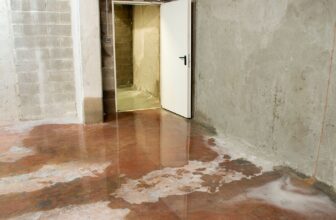
Container Gardening Tips for Growing Your Favourites
 Container gardens require thoughtful planning. This guide will teach you the basics of container gardening. We’ll help you choose the right planter and healthy plants. Whatever your gardening experience, these tips will help you create an attractive container garden.
Container gardens require thoughtful planning. This guide will teach you the basics of container gardening. We’ll help you choose the right planter and healthy plants. Whatever your gardening experience, these tips will help you create an attractive container garden.
Choose the Right Planter
Your container garden’s success depends on the right planter. Think about size, material, and drainage. Plants should complement the planter’s aesthetics.
- Terracotta Containers: Terracotta containers are beautiful. However, they have some drawbacks. They can be more expensive, heavier to move, and break easily. Additionally, they dry out quickly in the sun and require frequent watering.
- Ceramic Glazed Containers: Ceramic containers add beauty to a garden. They also keep moisture better. However, they are more expensive. Investing in an entire garden with them might be prohibitively pricey.
- Plastic Containers: Plastic containers are the easiest and lightweight option. They’re easy to move around. Often, they are considered disposable. Reuse plastic pots year after year to extend their lifespan.
- Wooden Containers: Wooden containers add natural and rustic charm to gardens. Various sizes and shapes are available to suit your gardening needs. Yet, wooden containers may need regular maintenance to prevent rot. By sealing the wood with a non-toxic sealant, you can extend its lifespan.
- Cement Containers: These are expensive but durable. They’re a great choice for permanent containers. Even in strong winds, their weight keeps them stable. Additionally, cement planters provide excellent insulation for plant roots. The long-term benefits and minimal maintenance make cement planters a worthwhile investment.
Select the Right Soil
Healthy container gardens start with quality potting soil. Make sure the mix is well-draining and contains organic matter. Garden soil can compact and hinder root growth. You should choose a soil mix tailored to the specific needs of your plants.
Choose Healthy Plants
When selecting plants for your containers, prioritise their health and vitality. Check plants for pests, diseases or root damage. Avoid wilted or leggy species. Consider factors such as sun exposure, water needs, and mature size when choosing. Create visually appealing combinations. Use a range of heights and colours.
Save the Plant Tag
Plant tags are essential.It tells you how large your plant will grow, and how much light, water, and food it requires. In addition, they provide information on the level of care it needs. The tag will also state whether your plant is an annual or a perennial. It describes the plant’s “habit,” which refers to its shape and growth pattern. This information is crucial when planning your container design and arranging your plant combinations. If you lost the tag or need additional guidance, ask your gardening services provider for assistance.
Match Light Conditions
Understand your plants’ light requirements. Plants that like full sunlight should be placed in a sunny spot. While those that like shade should be placed in a shady spot. Consider the orientation of your outdoor space and the duration of sunlight throughout the day to ensure proper placement. This will ensure optimal growth and flowering.
Plant in Layers
Layer your container arrangements for depth and visual interest. Provide tall, upright plants, bushy, mid-sized plants and trailing plants that spill over the edges. Combine plants to achieve striking arrangements that balance height, texture, and colour.
Acclimate the Plants
Plants dislike sudden changes, so gradually acclimating them to changes in light conditions, and exposure to the elements, water, or temperature will generally keep them happy. This is especially important for young plants and essential for those grown in a greenhouse.

You must harden your plants when you buy seedlings in the spring or grow your own from seed. Follow this process, even though it is slow and tedious. If you plan to overwinter your plants in a colder climate, they will also need an adjustment period.
Water Frequently
As a result of faster evaporation and limited soil volume, container plants require more water. Regularly check the moisture level. Water whenever the top inch of soil feels dry. Water hanging baskets and terracotta pots daily. This will prevent dehydration. Use self-watering containers or drip irrigation systems to manage moisture.
Don’t Forget the Drainage
The soil can become too wet if there aren’t enough holes for water to escape. This leads to root rot and plant death. Many garden pots lack drainage. Drill, punch, or carve larger holes to improve drainage. However, it’s sometimes easier to buy a pot with sufficient drainage. The drainage hole diameter should be 1/2 inch for small to medium-sized pots. Larger containers should have holes at least an inch wide.
Fertilise Regularly
Fertilise your container plants regularly throughout the growing season. Use a balanced, water-soluble fertiliser. Always follow application instructions. Supplement slow-release fertilisers in potting mixes with liquid fertilisers to ensure continuous feeding for healthy growth and abundant flowering. Don’t over fertilise to prevent nutrient imbalances.
Remove Faded Blooms
Keep your container garden healthy and attractive. Regularly deadhead spent flowers. Remove faded blooms promptly. This prevents seed formation and encourages new flowers. Cut back dead flower heads to healthy foliage or stems with scissors or pruning shears. Deadheading encourages more flowering and keeps your containers looking neat and vibrant.
Renew and Replace
Replace tired or spent plants periodically to keep your container garden looking fresh. Remove any plants that are past their prime in late summer or early autumn. Refresh your containers with new specimens or seasonal favourites.Consider experimenting with different plant combinations and arrangements to keep your container garden dynamic and appealing.
Clean Up Before Winter
Winterize your container gardens. Clean up and prepare them for cold weather. Remove annuals and tender perennials that are no longer actively growing, composting organic matter. Empty ceramic and terracotta pots to prevent cracking.

Consider insulating containers or moving them to sheltered areas. Protect any overwintering plants by mulching around their base and monitoring moisture levels to ensure their survival until spring.
Conclusion:
In conclusion, a successful container garden depends on carefully chosen planters, soil, and plants. They also require consistent maintenance. A thriving and beautiful garden can be created anywhere with the right materials and care. Maintain a regular watering and fertilising schedule and acclimate your plants to new conditions gradually. With these steps, your container garden will flourish, bringing vibrant colours and life to your outdoor area all season long.



















































































